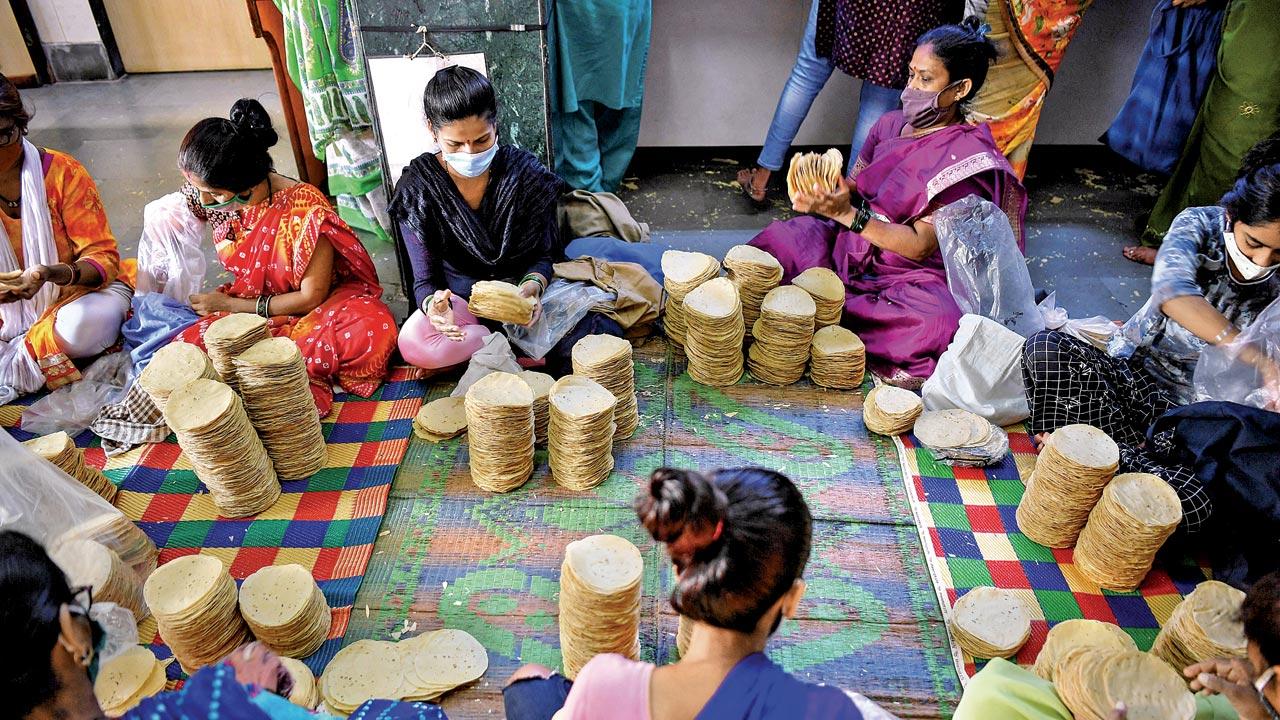In a new book, a science and technology writer pays homage to sau innovative concepts that helped India come into her own

Maruti 800 (796cc) cars are parked at the Maruti factory in Gurgaon. Pic/Getty Images
In 1947, when Independent India was rebuilding itself sans the Raj, it had to contend with a population that was still fighting death and disease. The average life expectancy of an Indian was just 32 years. With communicable diseases rampant, the general mortality rate was extremely high at 27 per 1,000. Today, 75 years on, life expectancy has more than doubled to 68 years. “How did this change happen?” asks Delhi-based journalist and author Dinesh C Sharma, who writes on science and technology. “I feel that sometimes we are too cynical of the state of the country, overwhelmed by the enormity of problems around us. In the process, we lose sight of the big picture. As a writer, I felt all such stories in different sectors would make a compelling read for the younger generation of Indians,” Delhi-based Sharma explains in an email interview.
ADVERTISEMENT
It’s what got him to write his new book, Indian Innovation, Not Jugaad: 100 Ideas that Transformed India (Roli Books), where he looks back at a wide range of innovative ideas, policies, concepts and institutions that transformed a young democratic republic into a thriving nation.
 Dinesh C Sharma. Pic/Nishad Alam
Dinesh C Sharma. Pic/Nishad Alam
The challenge when researching for this book, which took him less than a year to write, was zeroing in on “100 ideas and innovations, given the vast canvas of 75 years and looking for them in diverse sectors”. He also had to figure how best to categorise these—sector-wise, chronologically, or specific to genre. “Since no precedence of such a list existed, I devised some broad criteria for inclusion and exclusion, which I have elaborated on in the book. This was the methodology I followed. Coming to the entries per se, the first list I developed was heavily biased in favour of science and technology, which was familiar territory for me. That list underwent several modifications to make it diverse and to avoid it looking like a laundry list of achievements. I had to get out of my comfort zone and spot innovations in governance to fashion and sports. You can still say it is a subjective list,” he says, adding, “But I feel each sector deserves a list of its own because there are several micro-innovations in each of them.”
Here are five unusual, quintessentially Indian ideas that Sharma shares his thoughts on.
Maruti 800
Category: Transport and mobility
The aspirational model for millions of middle-class Indians came to India nearly four decades ago. The first unit of Maruti 800 rolled out on December 14, 1983, and until the last one manufactured in February 2014, it remained India’s bestselling car. “Ideas in the transport sector—metro rail, electric cars, small cars, expressways etc— have all been there for decades in the West and also in some Asian countries. The reason I included them here [in my list] is because of unique factors in each of them that made them a success in the Indian context.” He explains that when it came to Maruti 800, it may have seemed like just another variant of the small car Suzuki was selling in Japan. “What made Maruti 800 a disruptor in the Indian market is a mix of design, engineering and marketing improvisations done for Indian conditions. Certain special features were introduced to ensure that the car did not come to a halt in waterlogged streets, and its body was more suited for pot-hole ridden Indian roads,” says Sharma.
Universal iodisation of salt
Category: Health and medical research
 Pic/Getty Images
Pic/Getty Images
India, Sharma writes in the book, was the first country in the world to recognise iodine deficiency as a public health problem and launched the National Programme for Goitre Control in 1962. Indian scientists demonstrated that providing minuscule amounts of iodine mixed in salt can help with iodine deficiency disorders; salt was chosen to deliver iodine because it was consumed by majority of the population. “This is a great example of how science-led innovation resulted in one of the most significant public health programmes in independent India. The most critical point in the innovation chain was the idea that an essential micronutrient can be delivered to the population through a commonly consumed cooking ingredient, and safely. It took decades for scientific evidence to be generated on universal iodisation of salt and then to be implemented as public policy in India, and in similar settings across the world.” It was only in 1993 that WHO recommended salt iodisation as a primary intervention to control iodine deficiency disorders globally.
Playback Singing
Category: Art, Culture, Cinema, Architecture, Sports
Sound, says Sharma, was a novelty in filmmaking in the 1930s and filmmakers not only in Hollywood, but also in other places where people were trying to deploy it in their work. “The film industry in Bombay was a legacy of the Parsi theatre in which songs and music were integral. So when sound came, Indian filmmakers introduced songs in their work in a large measure. The process went through several iterations. First, we had musicians following the stars on screen, then we had singing stars like Ashok Kumar, KL Sehgal, Noorjahan, Devika Rani and so on who sang their lines and also acted. Subsequently, technology made it possible to record sound separately and sync it with visuals, giving rise to a new category of artistes—playback singers. Playback singers in Hollywood musicals remained anonymous and even had to sign contracts that they would not reveal their identities, while in the Bombay industry playback singers became stars in their own right,” he says.
Lijjat Papad
Category: Grassroots technologies and movements
 Lijjat Papad is run by India’s largest cooperative of women, Shri Mahila Griha Udyog, and solely run by women, with 80 branches across the country and over 43,000 members. It is still rolled out in homes with manually prepared and kneaded dough. Pic/Getty Images
Lijjat Papad is run by India’s largest cooperative of women, Shri Mahila Griha Udyog, and solely run by women, with 80 branches across the country and over 43,000 members. It is still rolled out in homes with manually prepared and kneaded dough. Pic/Getty Images
Among papad brands in India, Lijjat continues to be one of the oldest and most trusted. Lijjat, shares Sharma, began as a collective of seven women in Bombay in 1959. And though packed and marketed like any other factory-made processed food, it is “still rolled in homes with manually prepared and kneaded dough by thousands of women across the country”. With an annual turnover of R800 crore, it is India’s largest cooperative of women, solely run by women. “Normally innovation is construed to be just technology-based, IT or digital, or a gizmo, product. In India, it is also confused with crude contraptions that go in the name of jugaad. The idea of this book is to debunk these notions. A new way of marketing, an out-of-box public policy, a new service delivery system, a novel packaging method, unique public movements—all can be innovations and transformative ideas,” says Sharma.
The Right to Information
Category: Governance, public utilities and law
The RTI law says Sharma “is vastly different from the freedom of information concept prevalent in Western democracies such as the USA and those in Western Europe. The law grew out of a people’s movement in Rajasthan where daily wage earners demanded that contractors show them muster rolls in which they were made to put their thumb impressions without being paid minimum wages. “This exposed large-scale corruption in public schemes, fair price shops and so on, and eventually led to codifying the right into law at the state level and then at the national level. RTI thus, took shape from the grassroots, it was not a concept that planners and lawmakers in Jaipur or Delhi thought of. The RTI law was a turning point in public policy and law-making and has had a profound impact on governance injecting some transparency and accountability. It is sad that subsequent governments have tried to water down its implementation,” he shares.
 Subscribe today by clicking the link and stay updated with the latest news!" Click here!
Subscribe today by clicking the link and stay updated with the latest news!" Click here!







